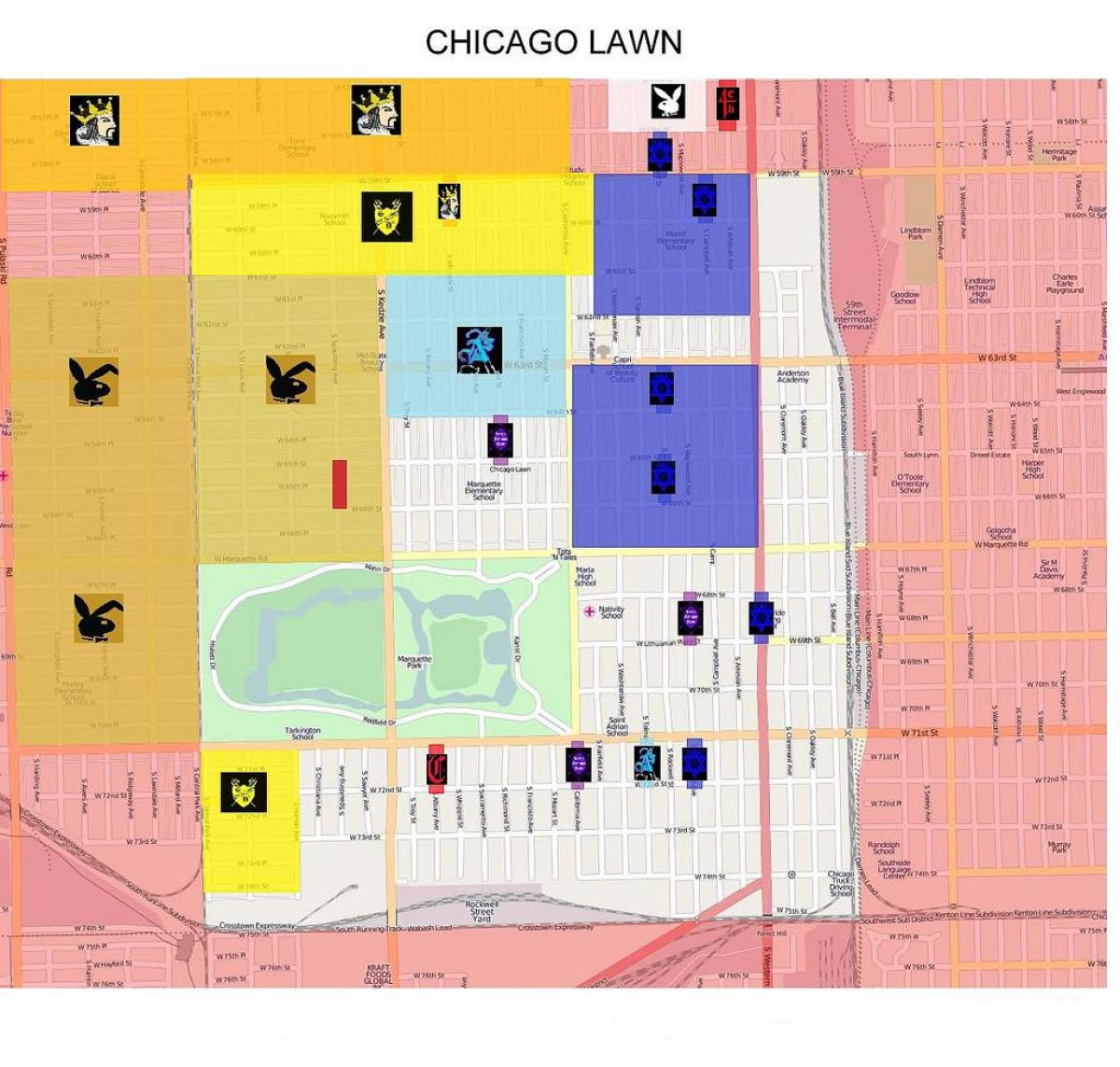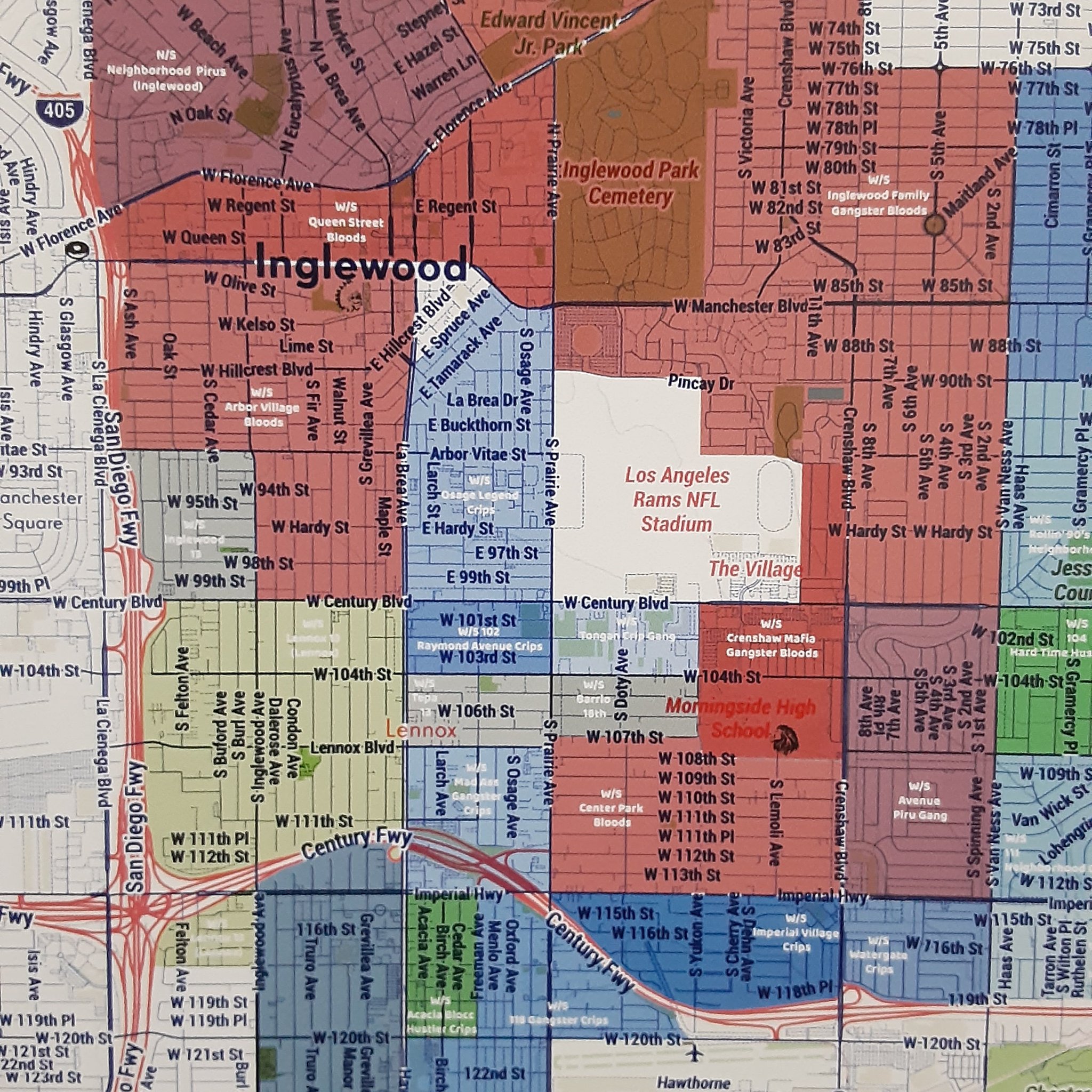Gang Map: Your Ultimate Guide To Understanding And Navigating Street Gang Territories
Hey there, fellow urban explorer! If you've ever found yourself scratching your head over what a gang map is or why it matters in today's world, you're not alone. A gang map is more than just a piece of paper with lines and names. It's a crucial tool that provides insights into the complex web of territories controlled by street gangs across cities worldwide. Whether you're a curious citizen, a law enforcement officer, or just someone who wants to stay safe, understanding gang maps is key. So, let's dive right in and unravel the mystery behind these maps!
Now, you might be wondering, "Why should I care about gang maps?" Well, here's the deal: knowledge is power. Knowing where certain gangs operate can help you avoid dangerous areas, protect your loved ones, and even contribute to community safety. In this article, we'll break down everything you need to know about gang maps, from their origins to their significance in modern society. Stick around because this is going to be an eye-opener!
Before we get into the nitty-gritty, let's address the elephant in the room. Gang maps aren't just for law enforcement anymore. They've become a valuable resource for researchers, urban planners, and even everyday people like you and me. So, whether you're looking to deepen your understanding of urban dynamics or simply want to stay informed, this article's got you covered. Let's roll!
Read also:Aditya Roy Kapoor Father Name Unveiling The Legacy Of A Bollywood Powerhouse
What Exactly Is a Gang Map?
A gang map, in its simplest form, is a visual representation of gang territories within a specific area. Think of it as a modern-day treasure map, except instead of gold, it marks the boundaries of influence for various street gangs. These maps are meticulously crafted using data collected from police reports, community feedback, and sometimes even informants. They provide a bird's-eye view of the gang landscape, helping authorities and citizens alike to navigate the often murky waters of urban crime.
Now, here's the kicker: gang maps aren't static. Just like the territories they represent, they evolve over time. Gangs merge, split, or relocate, and these changes are reflected in updated versions of the map. This fluidity makes gang maps a dynamic tool that requires constant attention and updates. So, if you're thinking about using a gang map from five years ago, think again. The landscape might have changed dramatically since then.
How Are Gang Maps Created?
Creating a gang map is no small feat. It involves a combination of detective work, data analysis, and sometimes even a bit of luck. Law enforcement agencies typically lead the charge, gathering information from various sources. They interview gang members, analyze crime patterns, and even use social media to piece together the puzzle. It's like solving a giant jigsaw puzzle, except the pieces keep moving.
- Gathering Intelligence: This involves collecting data from police reports, community tips, and informants.
- Mapping Territories: Once the data is compiled, it's time to plot the territories on a map. This step requires precision and attention to detail.
- Updating Regularly: As mentioned earlier, gang maps are not set in stone. They need to be updated regularly to reflect changes in gang dynamics.
Why Do Gang Maps Matter?
Gang maps matter for a variety of reasons. For law enforcement, they serve as a crucial tool in crime prevention and community safety. By understanding where gangs operate, police can allocate resources more effectively and respond to incidents more swiftly. But it's not just about law enforcement. Gang maps also play a vital role in urban planning and community development. They help city planners design safer neighborhoods and allocate resources to areas that need them most.
For the average citizen, gang maps can be a lifesaver. Knowing which areas to avoid can mean the difference between a peaceful evening and a dangerous encounter. It's like having a personal security system that alerts you to potential dangers before you even step out the door. So, whether you're a local resident or a visitor, a gang map can be an invaluable resource.
Impact on Community Safety
The impact of gang maps on community safety cannot be overstated. By providing a clear picture of gang activity, they empower communities to take action. Neighborhood watch groups can use the information to patrol areas that are at higher risk of gang-related violence. Community leaders can work with law enforcement to develop strategies to reduce gang activity and promote peace. In short, gang maps are a powerful tool in the fight against urban crime.
Read also:Pining Kim The Rising Star In The Spotlight
Common Misconceptions About Gang Maps
Despite their importance, gang maps are often misunderstood. One common misconception is that they only show areas where gangs are active. In reality, gang maps provide a much broader picture. They highlight not only gang territories but also areas where gang activity is on the rise or where rivalries between gangs are escalating. Another misconception is that gang maps are only used by law enforcement. As we've seen, they are valuable resources for a wide range of stakeholders, from urban planners to everyday citizens.
Some people also believe that gang maps are infallible. While they are incredibly useful, they are not without their limitations. The data used to create them can sometimes be incomplete or outdated. That's why it's important to use gang maps as one of many tools in the fight against crime, rather than relying on them as the sole source of information.
Debunking the Myths
Let's take a moment to debunk some of the most common myths about gang maps:
- Myth: Gang maps only show gang territories. Fact: They provide a comprehensive view of gang activity, including areas of tension and emerging threats.
- Myth: Only law enforcement uses gang maps. Fact: They are valuable resources for urban planners, community leaders, and everyday citizens.
- Myth: Gang maps are always accurate. Fact: They are powerful tools, but their accuracy depends on the quality and timeliness of the data used to create them.
How Gang Maps Are Used Today
In today's world, gang maps have found applications far beyond their original purpose. They are used by urban planners to design safer cities, by researchers to study gang dynamics, and by community organizations to promote peace. For example, urban planners might use gang maps to identify areas that need more streetlights or surveillance cameras. Researchers might use them to track changes in gang activity over time. And community organizations might use them to organize peace-building initiatives in areas of conflict.
Technology has also played a significant role in the evolution of gang maps. With the advent of GIS (Geographic Information Systems) and other mapping technologies, gang maps have become more detailed and interactive than ever before. Users can zoom in on specific areas, view historical data, and even overlay other types of information, such as crime statistics or demographic data.
Technological Advancements
The integration of technology has revolutionized the way gang maps are created and used. GIS systems allow for the collection and analysis of vast amounts of data, making it easier to identify patterns and trends. Mobile apps have made gang maps more accessible to the general public, allowing users to access real-time information on their smartphones. These advancements have not only improved the accuracy of gang maps but also expanded their reach and impact.
Challenges and Controversies
While gang maps are incredibly useful, they are not without their challenges and controversies. One of the biggest challenges is ensuring the accuracy and timeliness of the data used to create them. With gangs constantly evolving and shifting territories, keeping the maps up to date can be a daunting task. Another challenge is privacy concerns. Some people worry that gang maps could lead to profiling or stigmatization of certain communities.
Controversies also arise around the potential misuse of gang maps. For example, there are concerns that they could be used to justify increased police presence in certain areas, potentially leading to over-policing. It's important to address these challenges and controversies to ensure that gang maps are used responsibly and ethically.
Navigating the Challenges
So, how do we navigate these challenges? The key lies in transparency and collaboration. Law enforcement agencies and other stakeholders must be transparent about how gang maps are created and used. They should also involve community members in the process to ensure that the maps accurately reflect the reality on the ground. By working together, we can create gang maps that are both effective and ethical.
Success Stories and Case Studies
To truly understand the impact of gang maps, let's take a look at some success stories and case studies. In one city, the use of gang maps led to a significant reduction in gang-related violence. By identifying areas of tension and deploying resources more effectively, law enforcement was able to prevent several potential conflicts. In another case, a community organization used gang maps to organize peace-building initiatives, resulting in improved relations between rival gangs.
These success stories highlight the potential of gang maps to make a real difference in urban communities. They show that with the right tools and strategies, it's possible to reduce gang activity and promote peace. So, if you're skeptical about the power of gang maps, these stories might just change your mind.
Learning from the Best
What can we learn from these success stories? First and foremost, the importance of collaboration. Whether it's between law enforcement and community organizations or between different stakeholders, collaboration is key to making gang maps effective. We can also learn about the importance of using data responsibly and ethically. By ensuring that gang maps are accurate and up to date, we can avoid the pitfalls of misinformation and misuse.
The Future of Gang Maps
Looking ahead, the future of gang maps is bright. With advancements in technology and increased collaboration between stakeholders, we can expect gang maps to become even more detailed and interactive. Imagine a future where gang maps are updated in real time, providing law enforcement and citizens with the most current information available. Or a future where AI-powered systems analyze gang maps to predict potential conflicts before they occur. The possibilities are endless.
Of course, with these advancements come new challenges. Ensuring data privacy and security will be more important than ever. We'll also need to address issues around the ethical use of gang maps, ensuring that they are used to promote safety and peace rather than fear and division.
Preparing for the Future
As we prepare for the future, it's important to stay informed and engaged. Whether you're a law enforcement officer, an urban planner, or just a concerned citizen, understanding gang maps and their potential is crucial. By staying up to date on the latest developments and participating in discussions around their use, we can help shape the future of gang maps in a positive way.
Conclusion: Take Action!
And there you have it, folks! A comprehensive guide to understanding and navigating gang maps. From their origins to their significance in modern society, we've covered it all. So, what's next? It's time to take action. Whether it's staying informed about gang activity in your area, supporting community initiatives to reduce gang violence, or advocating for the responsible use of gang maps, there's plenty you can do to make a difference.
So, don't just sit there! Share this article with your friends and family, leave a comment below, and let's keep the conversation going. Together, we can create safer, more peaceful communities. Thanks for reading, and stay safe out there!
Table of Contents
Article Recommendations


